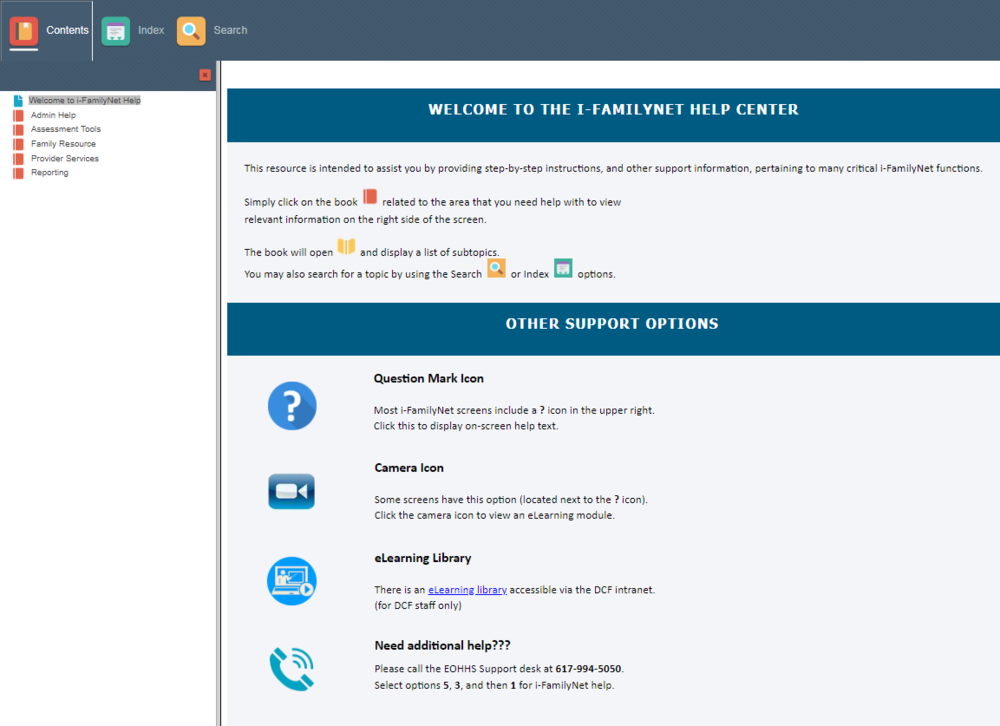Build a Knowledge Base with Adobe RoboHelp
A knowledge base (KB) is a customer self-service center: a repository of complex information organized so it’s easily accessible. It’s pretty and user-friendly, with an intuitive design.
Similarly to the way that a database stores data, a knowledge base stores knowledge. It contains an array of information such as how-to software tutorials, procedures, and best practices. The information is structured so that you can quickly find specific content at the exact moment when you need it.
Content formats may include:
documents
articles
wikis
job aids
eLearnings
embedded videos
One way to create a knowledge base is by using a tool like Adobe RoboHelp. Above is an example of a knowledge base I created using Robohelp, to support end users with a database application.
Employees access the application using a secure online portal. Then they begin their user journey. As they complete their work, accessing or filling in the data they need using that application, they might get stuck along the way, or have a question about software functionality. So they can click a Help icon or link embedded within the application, which will take them to this Help Center (i.e. employee knowledge base).
As you can see, it has a topic-based structure with folders, sub-folders, and topics within each folder. This taxonomy makes it easy for employees, or end users, to quickly find the exact information they need.
Your knowledge base could be part of your company website that customers visit to learn how to use a product manufactured by your company. Or it could be part of any cloud-based application. It could even be integrated into your intranet platform.
WHY HAVE A KNOWLEDGE BASE
With an employee or customer knowledge base, complex information is readily accessible with just a few clicks. You can structure your content around the analytics data in a way that will empower your end-users, helping them to quickly search for and find this information. This makes for a much better user experience.
The analytics accessible via the Reports tab of the RoboHelp Server application provide both quantitative and qualitative data. By leveraging this data to identify and fill any content gaps, you can better meet the needs of your customers, employees, and any other key stakeholders — keeping them informed. This can increase profit margins, as well as reduce operational costs, saving your employees time and money that would be otherwise spent answering questions to educate consumers via emails or help desk calls.
ROBOHELP ANALYTICS
Types of analytics data available to you, as the content author, include the following:
Search Terms with No Results
Frequently Searched Terms
Frequently Viewed Topics
Usage Statistics
Page Views
Pages per Visit
Search Trends
Help System Errors
CREATING YOUR KNOWLEDGE BASE
Getting started is simple, because the interface is very user friendly. There is a learning curve, as with learning any new tool, but it doesn’t take long to develop familiarity and dive right into your first project.
You have access to a tool ribbon for simple WYSIWYG functionality, similarly to using Microsoft Word. There is a Design tab, so you can work from there, and the HTML code will automatically generate. You can toggle back and forth if needed, and you can create style sheets as well.
Choosing a layout is also very simple because you have access to a gallery of different skins.
CONTENT WORKFLOW
When making edits to the content, publish them to the test server to get a better sense of how any additional enhancements look. Then you can share a link to the content with your team so they can preview the content and provide feedback, which you can then implement before publishing to Production.
And then… SHAZAM!!! Just like that, your project is live! Employees and customers now have access to view your instructional content.
All documentation is up to date. Employees can stay better informed, leading to enhanced collaboration and productivity. Customers feel empowered to use your products, and can easily stay abreast of any compliance changes or technical enhancements. This results in a better user experience and increased customer loyalty.
ADDITIONAL RESOURCES FOR GETTING STARTED
To get started, click here to compare the different versions available, such as the 2015 release or the 2017 release, and their system requirements. If you have a 64-bit CPU and operating system, you can go here to download a trial version of RoboHelp 2019.
If you are using RoboHelp 2015, click here to watch the Ribbon UI Video video, where you can learn about the User Interface and how to personalize and share content. Also, check out the following Lynda.com tutorials to dive right in and get started: What is RoboHelp: RoboHelp 2015 Essential Training.
For a complete overview of the Adobe RoboHelp analytics, check out RoboHelp Server: An Introduction.
EXAMPLES OF SOME GREAT ROBOHELP PROJECTS ON THE WEB:
http://www.robowizard.com/RoboWizard/#t=MerryMeet%2FMerryMeet.htm
http://elearningtools.us/robo/WebHelp/index.htm
http://www.emhandbooks.wisconsin.gov/meh-ebd/meh.htm
https://www.bluecrossmn.com/apps/blueedge/scripts/blueedge/Help/BlueEdgeWeb.htm
http://dpaweb.hss.state.ak.us/manuals/apa/admin/WebHelp/ap.htm







